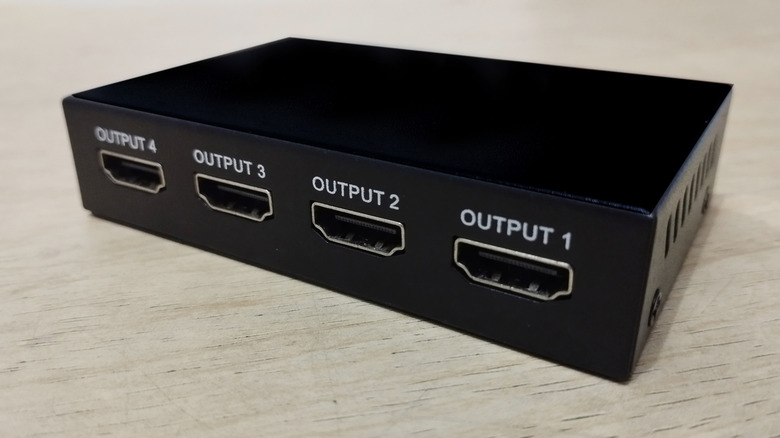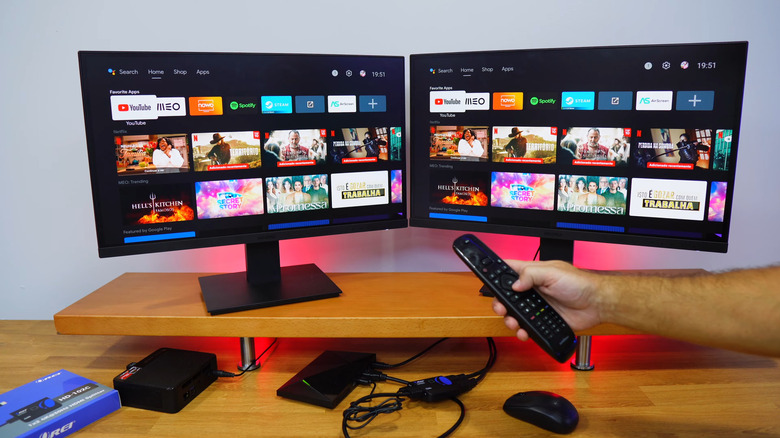What Is An HDMI Splitter And Can You Lose Signal Quality If You Use One?
Typically, you would use an HDMI cable to connect a streaming device, laptop, or gaming console to a single display. But what if you want to show that same content on multiple TVs or monitors? That's where an HDMI splitter can help. It is a tiny device that takes input from a single source and delivers it to multiple displays simultaneously. It has a single HDMI input port and multiple HDMI output ports.
As you can imagine, HDMI splitters can be incredibly useful in certain situations. For instance, in a classroom where multiple TVs are needed, an HDMI splitter can display the same content across all screens from a single source. Similarly, if you're setting up a multiplayer gaming station, an HDMI splitter can help provide each player a separate screen while receiving input from a single console. However, an HDMI splitter is not ideal for setting up dual monitors. That's because it only duplicates content, meaning you'll see the same thing on both the displays, rather than extending your desktop across two screens.
Make sure you don't confuse an HDMI splitter with an HDMI switch. While a splitter sends a single input to multiple displays, an HDMI switch does the exact opposite. It lets you connect multiple input devices to a single display. This is especially useful when your TV or monitor only has a single HDMI port. Instead of constantly unplugging and reconnecting devices, you can connect them all via an HDMI switch and change inputs as needed.
How to use HDMI splitters and do they affect quality?
Using an HDMI splitter is fairly straightforward. You first need to connect your source device, be it your laptop, gaming console, or a streaming box, to the input port of the HDMI splitter. Then connect the TVs or monitors to the splitter's output ports. If the HDMI splitter requires external power, plug in its power source. Finally, turn on the source device and all connected displays. You should now see the same content on all the screens.
Most HDMI splitters do not degrade audio or video quality, so you are unlikely to experience any drop in picture or sound quality. That said, you need to ensure that the splitter you use can handle the resolution and the screen refresh rate of your source device. For instance, even if you have mastered your 4K TV settings and want to play PS5 but the splitter only supports 1080p, you won't be able to game in 4K.
The displays you use also matter. If you are using two TVs that support different resolutions, the HDMI splitter will default to the lower resolution on both screens. Similarly, you need to ensure that the HDMI splitter you're using supports features like HDR and Dolby Atmos. Plus, the cables you use to connect your input and output devices also play a critical role. To ensure the best performance, you need to pick high-quality, compatible HDMI cables.

